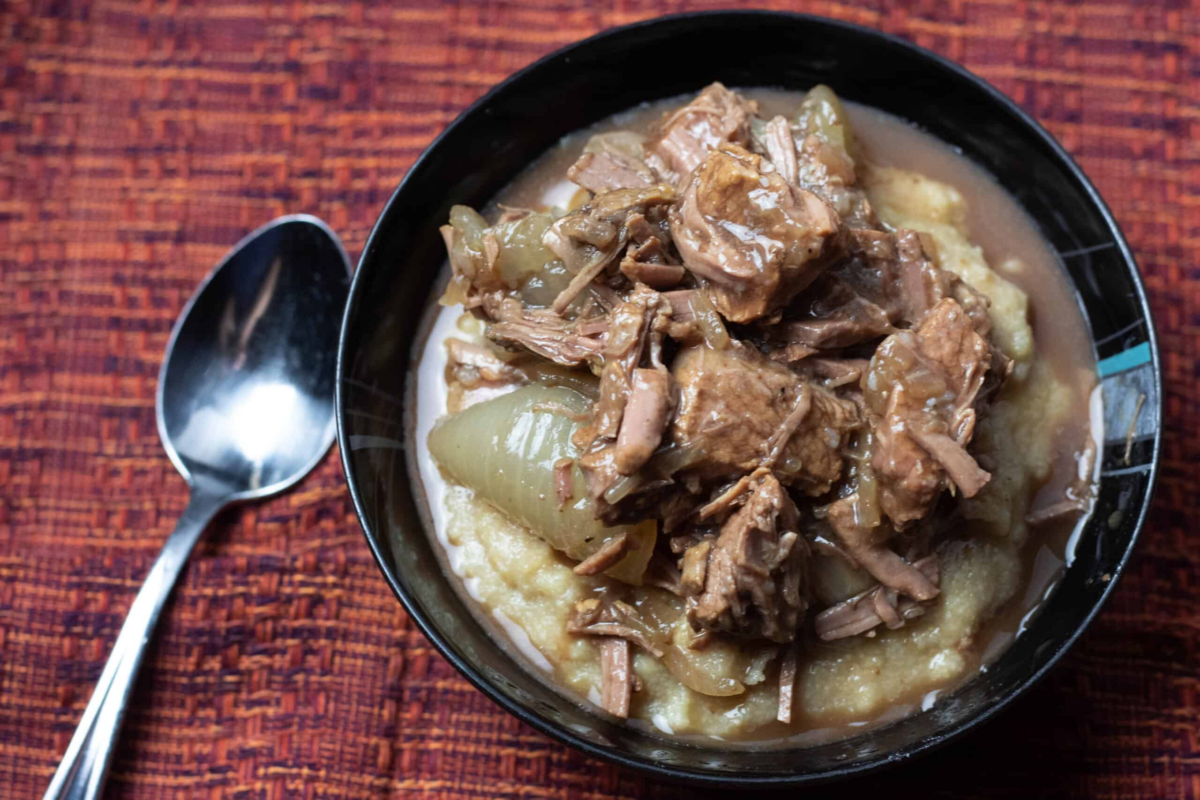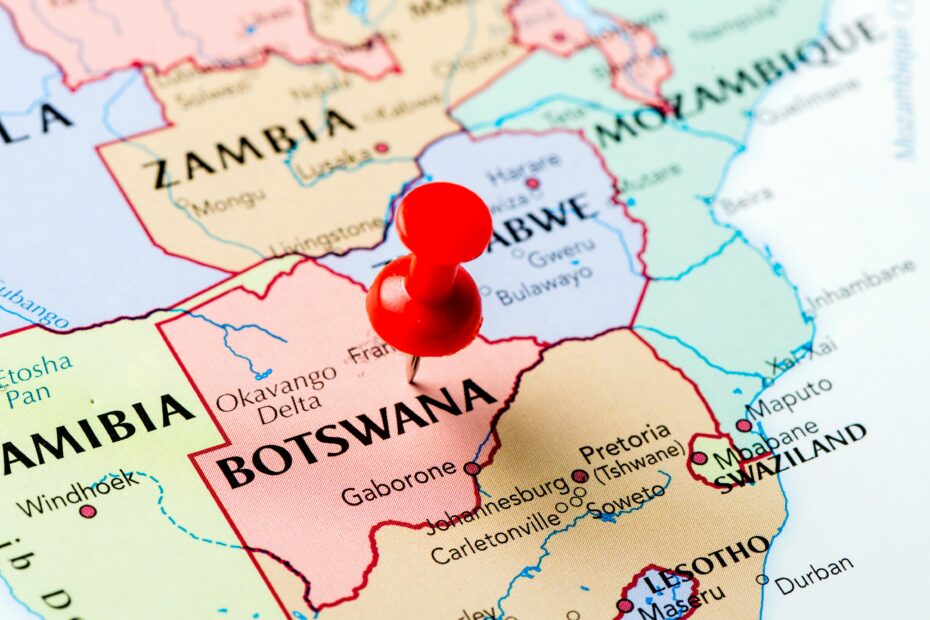Botswana, a landlocked country located in the southern part of Africa, is home to one of the most diverse wildlife populations on the continent. With its stunning landscapes, abundant wildlife and rich cultural heritage, Botswana has become a top destination for travellers looking to explore the wonders of Africa. Once ranked among the world’s six best countries to live in by BBC, Botswana truly lives up to its expectations. Here is why;
The Geography and Climate of Botswana
Botswana is characterized by its varied geographical landscapes, from the desolate Kalahari Desert enveloping the southwest to the lush Okavango Delta in the north, often called the ‘Jewel of the Kalahari’. The country also boasts the expansive Makgadikgadi Salt Pans, one of the largest salt flats in the world, and the hilly eastern region, home to the Tswapong Hills. Also Read: Discover Africa’s top 7 safest countries to visit in 2023 and why
Botswana’s climate is primarily semi-arid due to its position within the sub-tropical high-pressure belt. The country enjoys a high rate of sunshine throughout the year, with summer temperatures soaring up to 40°C (104°F). The rainy season is typically short and occurs during the summer months, from November to March. Winters are dry and cool, with temperatures ranging from 5°C to 25°C (41°F – 77°F), making it the ideal time to visit for those wanting to escape the intense summer heat.
Botswana’s geography is a canvas painted with breathtaking beauty. From the shimmering waters of the Okavango Delta to the vast expanses of the Kalahari Desert, this country offers an awe-inspiring variety of landscapes. The Okavango Delta, a UNESCO World Heritage Site, is a rare oasis, teeming with wildlife and captivating visitors with its intricate network of channels and lagoons. As you navigate through the meandering waterways on a traditional mokoro canoe, prepare to be enchanted by the symphony of nature that surrounds you.

Embracing the Spirit of Ubuntu
The heart and soul of Botswana lie in its people and vibrant culture. Predominantly made up of the Tswana people, the country is a harmonious blend of diverse ethnic groups, each adding a unique thread to the cultural fabric. As the citizens are called, the Batswana are known for their warm hospitality and deep-rooted traditions. A beautiful example is the principle of “Botho” or “Ubuntu,” a philosophy emphasising communal unity, respect, and humanity towards others, deeply ingrained in society.
The culture of Botswana reflects a rich tapestry of traditional music, dance, and art. The rhythm of the Botswana folk music, especially the popular ‘Borankana’ dance, echoes the pulse of the land. The intricate basketry and pottery of Botswana, often adorned with geometric patterns and designs, bear testimony to the artistic flair of its people.
Moreover, Botswana’s traditional and contemporary narratives are immortalized through oral storytelling, a cherished cultural practice that fosters shared understanding and social cohesion. Each narrative, passed down through generations, is a vibrant thread in the country’s rich cultural tapestry, celebrating its past, present, and future.

Savouring the Flavours of Botswana
Diving into the cuisine of Botswana offers a delightful sensory journey, with dishes that are a fusion of indigenous and international flavours. A staple food in the Batswana diet is ‘sorghum,’ often served as a porridge called ‘bogobe.’ It can be enjoyed with milk and sugar for breakfast or with meat and vegetables for a hearty dinner. Read Also: Exploring the African Diversity: A Glimpse into Each Nation
Another popular traditional food is ‘seswaa,’ a delectable, slow-cooked beef dish typically prepared for special occasions. Botswana’s cuisine also features a variety of wild fruits, such as ‘morula,’ which is enjoyed both as a fruit and used to make a local alcoholic beverage. On the streets, one can often find tasty snacks like ‘magwinya,’ fried dough balls that can be filled with anything from jam to savoury mince.
Not to forget, the culinary scene of Botswana also embraces foods from different cultures, with South African ‘biltong,’ Indian ‘samosas,’ and Chinese noodles making their mark. The food of Botswana, characterized by its simplicity and flavour, is a testament to the diverse influences that have shaped this beautiful nation.
A Beacon of Stability and Prosperity
Botswana’s economy, considered one of the fastest-growing in the world, is largely driven by mining, particularly diamonds, tourism, and agriculture. The discovery of diamonds shortly after its independence transformed its economic landscape, propelling it from one of the poorest countries to a middle-income nation. Diamond mining is a major contributor to its GDP and foreign exchange earnings.
Tourism also plays a significant role in Botswana’s economy, with its stunning wildlife and natural beauty attracting visitors worldwide. The Okavango Delta, the Chobe National Park, and the Central Kalahari Game Reserve are key tourist hotspots, contributing significantly to the industry’s revenue. Though less dominant, agriculture remains crucial, engaging a substantial portion of the population and providing vital food security.
The government of Botswana has also been proactive in diversifying its economy, investing in sectors like financial services, infrastructure development, and manufacturing. With political stability, prudent economic management, and sustained efforts towards economic diversification, Botswana continues to shine as a beacon of prosperity and stability in Africa.

Nature’s Playground
Botswana, truly a nature’s playground, has many breathtaking tourist attractions. The Okavango Delta, a UNESCO World Heritage Site, offers an enchanting landscape of lagoons, channels, and islands, teeming with an incredible diversity of wildlife. Visitors can explore this unique ecosystem on foot, by mokoro (traditional canoe), or on a scenic flight.
The Chobe National Park, known for its large elephant population, provides an unforgettable safari experience with diverse habitats ranging from lush plains to dense woodland. Visitors may spot lions, hippos, and many bird species in addition to the majestic elephants.
For those seeking solitude, the Central Kalahari Game Reserve, one of the largest protected areas in Africa, offers a vast expanse of wilderness with its golden grasslands, pristine landscapes and rich wildlife, including giraffes, cheetahs, and hyenas. The Tsodilo Hills, often called the ‘Louvre of the Desert‘, is a cultural landmark housing over 4,500 rock paintings, some dating back thousands of years, offering a glimpse into the region’s ancient history.
Additionally, the Makgadikgadi Pans, one of the largest salt pans in the world, presents a surreal, lunar-like landscape, particularly striking during the rainy season when it becomes a breeding ground for flamingos and other migratory birds. Whether you’re a wildlife enthusiast, a cultural explorer, or a lover of landscapes, Botswana’s diverse attractions promise an unforgettable journey into the heart of Africa.
Botswana in a Nutshell
Botswana is home to the world’s largest concentration of African elephants, particularly in the Chobe National Park. The country also takes conservation seriously, dedicating an impressive 45% of its land to national parks, reserves, and wildlife management areas. On the cultural front, Botswana is home to the San Bushmen, one of the oldest cultures on earth, with a rich tradition of storytelling, music, and art.
Furthermore, Botswana’s currency, the Pula, means ‘rain’ in the Setswana language, signifying the value the country places on this scarce resource in an arid landscape. Lastly, Botswana is one of the world’s largest producers of diamonds, contributing significantly to its economic growth and stability.



